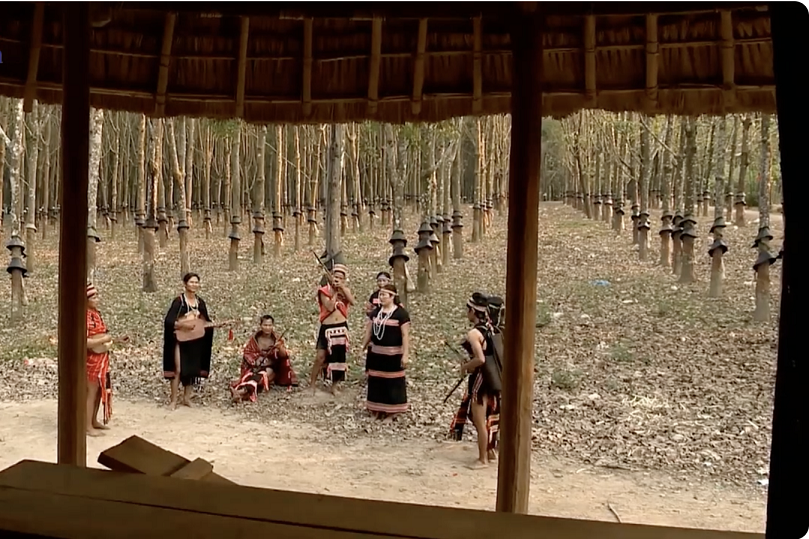
Dak Rang village, in Dak Duc commune of Ngoc Hoi district, Kon Tum province, is 15km north of Ngoc Hoi district center. Its population is about 200 people, of which 99% are Gie Trieng people who have lived here for a long time. The village is known as an attractive tourist destination with unique cultural features of the Gie Trieng ethnic group that have been well preserved until today.
The village has preserved many festivals as well as traditional crafts imbued with national cultural identity. These cultural values are being promoted by local people to serve the development of community-based tourism.
Dak Rang village still preserves some cultural identities in community and household activities, such as: Organizing traditional cultural festivals rich in identity; making can wine; brocade weaving; crafting unique musical instruments; Cultural activities such as gongs, xoang dances and traditional festivals such as the Buffalo Eating Ceremony, a major festival of the Gie Trieng ethnic group.
Many long-standing indigenous cultural features are still preserved over the years, such as men's outfit with an indigo head scarf, earrings made of precious wood or ivory, and tattoos with many simple, but delicate patterns, or the waistcloth with many unique traditional patterns.
Women have long hair and often wear dresses with bold red stripes and patterns on an indigo background. This is a special thing that only exists in Gie-Trieng women. The skirts highlight the healthy, modern beauty but are no less traditional. In addition, women here also wear a lot of beautiful jewelry.
The Gie Trieng people live in stilt houses built on rectangular grounds. Each house is usually about 15 m long. The stilt houses of the Gie Trieng people are roofed with thatch and have many similar structures to the houses of the Kinh people with a system of columns, beams, ... However, visitors will find unique features in the stilt houses of the Gie Trieng people, that is the tortoise shell-shaped roof, sloping at both ends and decorated with two buffalo horns and all houses are oriented east - west.
Groups of famous artisans of Dak Rang village regularly participate in traditional festivals inside and outside the province. Coming to the village, you can see the process of making traditional musical instruments such as: Dinh tut, Ting Ning, flute, ta-len, ta-let, jar, oong-enh, pin-pui, Po-Ron, To-rung…
Some households in the village have offered tourist services such as homestay, guiding tourists to attend cultural activities in the village, experience and shopping services such as buying brocade items, buying wine bottles, handicraft products (baskets, gourds, communal houses, folk wooden statues,...); traditional musical instruments (Ding tut, Ting Ning, flute, ta-len, ta-let, jar, oong-enh, pin-pui, Po-Ron, T-rung); weaving brocade, making wine, knitting, cultural exchange of gongs, xoang dancing,... experiencing the activities and life customs of the Gie Trieng people, processing traditional dishes such as grilled chicken, bamboo-tube rice, leaf salad, grilled pork, typical cuisine of the Gie Trieng people to serve tourists...
An interesting thing that attracts domestic tourists to Dak Rang is the route to Bo Y international border gate - Indochina border junction. As for international tourists, Dak Rang village is a destination in the tour to the Central Highlands along Highway 14.
Therefore, Kon Tum province joins the Vietnam Tourism Association to build a route, including Dak Rang village, for travel firms to introduce to tourists.